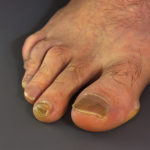By Bonnie Jenkins, Advanced Natural Wellness
Sometimes the urge to say I told you so is overwhelming, especially if it’s well deserved. That was pretty much the case recently when a new government study came to the stunning conclusion that glucosamine and chondroitin can provide significant pain relief for people with arthritis.
Well, I told you so!
This one really belongs in the “duh” file if you ask me. After all, millions of arthritis sufferers have known about the incredible joint benefits of glucosamine and chondroitin for years. But I suppose we should be grateful that the U.S. government has finally given these two stellar supplements their seal of approval.
Two For The Road
The conclusion that glucosamine and chondroitin could alleviate pain in folks with osteoarthritis of the knee came from two studies recently presented at an annual meeting of the American College of Rheumatology (ACR) in San Diego. The first, known as the Glucosamine/Chondroitin Arthritis Intervention Trial (GAIT), involved 1,500 osteoarthritis patients who were given either a placebo, Celebrex. a daily dose of 1,500 mg. of glucosamine, 1,200 mg. of chondroitin or a combination of the two supplements.
After six months, the GAIT researchers found that the patients taking the supplement combination experienced a significant reduction in moderate to severe knee pain. Now these findings aren’t earth shattering. In fact, this new study, which was sponsored by the National Institutes of Health (NIH), is consistent with more than 50 published clinical trials that have demonstrated the safety and pain relieving properties of the two supplements. But because it was backed by the federal government, it seems to have more credibility somehow.
The second trial was a multi-centered study conducted in Spain and Portugul. Dubbed GUIDE for Glucosamine Unum in Die Efficacy, this study consisted of 318 patients with arthritis of the knee. Each patient was given either 1,500 mg. of a soluble powdered glucosamine, 1,000 mg. of acetaminophen or a placebo. Not surprisingly, the glucosamine supplement was more effective in relieving osteoarthritis pain than acetaminophen.
Open your arteries, improve blood flow for a new health miracle...
Did you know your circulatory system has over 60,000 miles of arteries, veins and other blood vessels, if stretched end to end?
But as you age, your blood vessels undergo changes, which may cause them to stiffen, thicken and get clogged.
GOOD NEWS! Doctors have now identified a “Miracle Molecule” inside your arteries that helps OPEN your arteries and IMPROVE blood flow.
It’s what Dr. Valentin Fuster calls it, "One of the most important discoveries in the history of cardiovascular medicine."To you, that means...
- Healthy blood pressure
- Sharper mind and memory
- Skyrocketing energy and muscular strength
- Increased pleasure and passion in the bedroom
- Improved circulation to every cell and organ in your body
Go here to discover a new natural way to significantly boost the levels of this miracle molecule in YOUR body NOW!
Glass Half Full
The problem with these studies is that they don’t go far enough. By only looking at the pain-relieving potential of these supplements, they miss the real benefits of glucosamine and chondroitin for treating osteoarthritis – that both of these compounds can actual modify the structure of your deteriorating joints. Made from seashells, glucosamine provides the building blocks for proteoglycans, which provide elasticity and stiffness on compression. Using glucosamine on a long-term basis can help joints function better by protecting cartilage from enzymes that can destroy it and prevents the death of cartilage cells – not only halting joint destruction, but actually reversing it.
One clinical trial by researchers in Belgium found that glucosamine stopped the progression of arthritis in the knees of postmenopausal women. During the three-year study, 414 women were given either a glucosamine supplement or placebo. By the end of the trial, the researchers found that the women taking the glucosamine actually had structural improvement in their joints. Those in the placebo group showed no improvement, and many found that their knees had gotten worse. Three times as many women in the placebo group also showed a narrowing in the space between joints – clear evidence of destruction.
Chondroitin, on the other hand, works by attracting synovial fluid into the web-like cartilage that covers the bones of the joint. This fluid provides shock absorption for surrounding bones and supplies nutrients to the cartilage, thus supporting its regeneration and growth.
And, although these two nutrients are effective on their own, taking them in tandem can yield some pretty amazing results. Studies show that this dynamic duo is incorporated into cartilage tissue, effectively slowing deterioration while helping to rebuild the components needed to maintain cartilage health. As a result, you’ll not only experience less pain, you’ll find that these two supplements lessen stiffness and increase your range of motion.
The Selenium Connection
While the GAIT and GUIDE studies dominated health headlines, another study quietly slipped under the media’s radar. But it may have important implications if you suffer from osteoarthritis.
The World's Quickest Solution for Ending Prostate and Urinary Misery
This has recently been revealed to be one of the only real breakthroughs in prostate health.
The seeds of a strange fruit (sometimes called "Chinese Apples") hold powerful phytonutrients that are a revolution in prostate health.
In fact, UCLA and Veterans Administration research have now proved this to be true.
Not only that, but it may be the worlds quickest solution for ending prostate misery.
Simply stated, these phytonutrients represent a huge step beyond beta sitosterol, saw palmetto, and other phytosterols alone.
Simply click HERE if you want to have fast prostate relief...restful, uninterrupted sleep...no more constant "urges to go"...enhanced virility...and optimal prostate support for life.
It seems that a team of researchers from the University of North Carolina at Chapel Hill have found that even a miniscule boost in selenium can lower the risk of developing osteoarthritis by 15 to 20 percent. Better yet, among the 940 volunteers they studied, those with the highest selenium levels had a 40 percent lower risk of knee osteoarthritis than those in the lowest-selenium group. These findings are the first to link this important mineral to joint health.
Boosting your selenium intake is easy. Foods rich in this mineral include whole grains, seafood and especially brazil nuts. Selenium is also a standard addition to many multivitamins. But you need to check the label to ensure that your multi provides at least 70 mcg. – the daily value established by the government to prevent a deficiency.
But, since selenium enhances the antioxidant effect of vitamin E and lowers the risk of lung, colorectal and prostate cancer, you might want to think about supplementing with more than the government’s daily value. Research has found that taking between 100 and 200 mcg. of this mineral also provides a hedge against both heart disease and cancer.
One Last Thing …
There’s another way to ease the agony of arthritis. And it doesn’t require a single pill!
The key is drop a few pounds. Researchers from Johns Hopkins Medical Center have found that even modest weight loss can cut the pain of osteoarthritis of the knee in half. In their four-month study of 48 overweight or obese adults with mild-to-moderate knee osteoarthritis, the researchers found that the participants who attended small group classes each week and engaged in 30 minutes of moderate-intensity walking per day lost more weight and experienced an improvement in their arthritis symptoms compared to those who didn’t lose any weight. In fact, just losing 10 to 15 pounds significantly reduced the pain and stiffness these people experienced.
The best part about this study, however, is that the participants began feeling better long before they reached their weight loss goals. After just two weeks, they reported improvement in their symptoms and in their general wellbeing.
Dropping just 10 percent of your weight isn’t as hard as it sounds. The Johns Hopkins team suggests eating 500 fewer calories a day and increasing exercise gradually over the next few months to reach a goal of walking 10,000 steps per day. You can start by taking the long route to the bathroom at work or parking on the far side of the parking lot.
This Just In …
Diabetics already know that they face a higher risk of complications like heart disease, neuropathy and blindness. Now they can add colorectal cancer to the list.
According to a new study by the Karolinska Institute in Stockholm, Sweden, people suffering from Type 2 diabetes have a significantly higher risk of developing colorectal cancer. The findings are based on an analysis of 15 clinical trials involving more than 2.5 million people. And men seem to have an even higher risk than women. According to the data, men are 43 percent more likely to fall victim to this deadly cancer, compared to a 33 percent risk in women.
Fortunately, you don’t have to take this news lying down. If you are diabetic, try adding fiber to your diet. Fiber not only helps to regulate insulin, it also contributes to colorectal health by decreasing transit time and easing elimination.
Fiber-rich foods include whole grains, beans, fruits and vegetables – and gradually increasing your intake to 35 grams or more per day can make a difference you can actually feel. But if you’re having trouble eating this much fiber, try supplementing with psyllium. Just make sure you drink at least eight ounces of water with each dose to activate the power of this fiber-packed supplement.
References:
Bartlett, SJ. “Relationship among Weight Loss, Body Composition, and Symptom Improvement in Overweight Persons with Knee OA.” Presented at the 2005 annual meeting of the American College of Rheumatology.
Bruyere O, Pavelka K, Rovati LC, et al. “Glucosamine sulfate reduces osteoarthritis progression in postmenopausal women with knee osteoarthritis: evidence from two 3-year studies.” Menopause. 2004;11:138-143.
Clegg DO, Reda DJ, Harris CL, et al. “The Efficacy of Glucosamine and Chondroitin Sulfate in Patients with Painful Knee Osteoarthritis (OA): The Glucosamine/chondroitin Arthritis Intervention Trial (GAIT).” Presented at the 2005 annual meeting of the American College of Rheumatology.
Herrero-Beaumont G, Román JA, Trabado MC, et al. “Effects of Glucosamine Sulfate on 6-Month Control of Knee Osteoarthritis Symptoms vs Placebo and Acetaminophen: Results from the Glucosamine Unum in Die Efficacy (GUIDE) Trial.” Presented at the 2005 annual meeting of the American College of Rheumatology.
Jordan JM, Fang F, Arab L, et al. “Low Selenium Levels are Associated with Increased Risk for Osteoarthritis of the Knee.” Presented at the 2005 annual meeting of the American College of Rheumatology.
Larsson CS, Orsini N, Wolk A. “Diabetes Mellitus and Risk of Colorectal Cancer: A Meta-Analysis.” Journal of the National Cancer Institute. 2005;97:1679-1687






